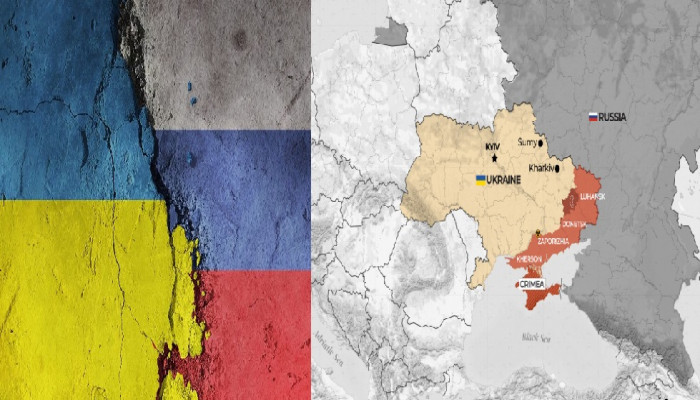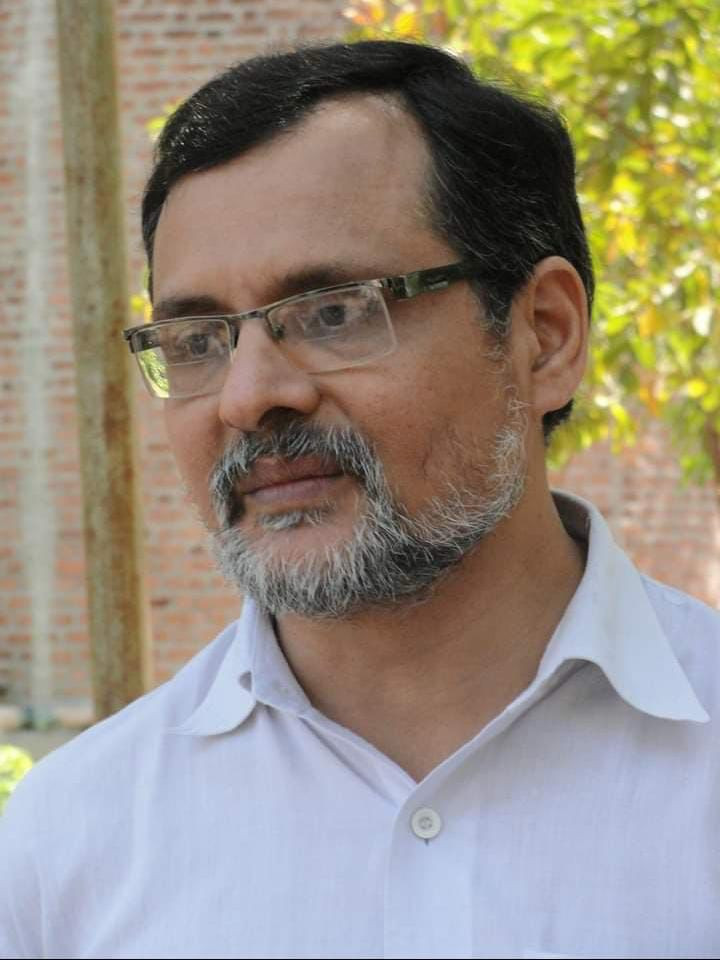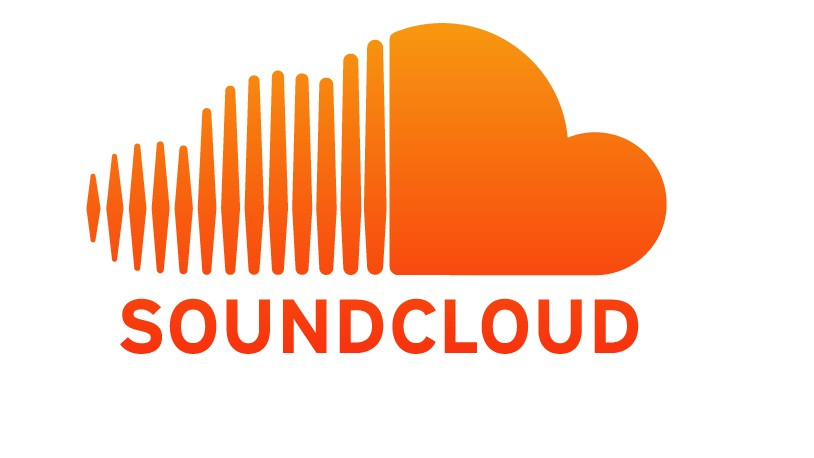Historical Bonds and Broken Trusts: The Russia-Ukraine Saga
- In Military & Strategic Affairs
- 01:21 PM, Aug 19, 2025
- Viren S Doshi
Why CCP-Occupied China enjoys the bloodbath as President Donald Trump and PM Narendra Modi Seek Resolution…
Introduction
The conflict between Russia and Ukraine, which erupted into full-scale war in 2022, has roots in a complex tapestry of shared history, shattered by geopolitical divisive forces, and internal differences.
This fratricidal struggle highlights how unbreakable geographical proximity — neighbours cannot be changed — can get fractured by divisive forces defeating nationalist forces that foster unity.
While conservatives like U.S. President Donald Trump and Indian Prime Minister Narendra Modi have pursued diplomatic avenues to end the hostilities, the Chinese Communist Party (CCP)-occupied China has pursued “strategic ambiguity”, offering rhetorical support for peace without committing to substantive mediation and fuelling this gruesome war behind the curtains.
This analysis explores the historical bonhomie between Russia and Ukraine, focuses on violations of the Minsk agreements, details on authoritarianism of Ukrainian President Volodymyr Zelensky, critiques NATO's role from multiple perspectives, including Russian concerns over warmongering, and addresses the European Union's (EU) anti-Russia posture amid calls for recalibration, particularly through President Trump's efforts.
The analysis incorporates updated data, including recent diplomatic developments, tries to enlist the shrewd “beneficiaries” of the war, examines money laundering allegations and makes general assumptions on future projections.
Russian-Ukrainian Brotherhood: Historical Ties and Recent Fractures
Russian-Ukrainian brotherhood is embedded in shared origins dating back to Kievan Rus', a medieval East Slavic federation from the 9th to 13th centuries, the common ancestor of Russians, Ukrainians and Belarusians. This state, centred in what is now Kyiv, fostered linguistic, cultural and religious unity; with Orthodox Christianity connecting the peoples.
This historical unity was fractured time and again since the 17th century. Ukraine's history includes autonomous periods like the Cossack Hetmanate (1648–1764), which endured partitions due to the Russian Empire and Austro-Hungarian Empire till the formation of the Soviet Republic in 1922.
The Soviet era witnessed a tragedy - the Holodomor (1932–1933), a famine that claimed millions of Ukrainian lives.
Post-1991 independence, Ukraine's population of 44 million (pre-war estimate) comprised of Ethnic Russians, making up about 17%, primarily in the east.
The events of the last decade have left the divisive force - nexus of Leftists on one hand and strangely the Nazis on the other hand - with the upper hand as detailed hereunder.
Chronology: From Shared Roots to Broken Families
1991: Ukraine's independence referendum passes with 92% support amid Soviet dissolution.
1994: Budapest Memorandum—Ukraine relinquishes nuclear arsenal for security guarantees from Russia, the U.S. and the U.K.
2004–2005: Orange Revolution protests, ushering in pro-NATO leadership that couldn't last longer, ultimately giving way to pro-Russian President Viktor Yanukovych.
2013–2014: Euromaidan uprising at the behest of leftist deep state and European leftist forces topples Yanukovych; rattled, Russia annexes Crimea and supports Donbas activists.
Under the Barack Hussein Obama Administration, U.S. diplomat Victoria Nuland's support for Euromaidan and a leaked 2014 call discussing Ukraine's government fuelled claims of NATO instigation. Critics link this to a leftist deep state agenda.
NATO's eastward expansion since 1999—adding 14 members—represents warmongering, breaching the alleged 1990 assurances to Mikhail Gorbachev against expansion.
President Putin cites this as encircling Russia, with Ukraine's potential membership as a red line.
2014–2015: Minsk I and II Agreements signed to enforce ceasefire, political reforms and withdrawal of forces; mediated by Organisation for Security and Co-operation in Europe (OSCE), France, Germany, Russia and Ukraine.
Violations of the Minsk Agreements
The Minsk agreements (2014–2015) aimed to end the Donbas fighting through ceasefires, heavy weapons withdrawal, and political decentralisation in Ukraine.
However, implementation faltered due to violations by Ukraine, followed by Russia. OSCE reports from 2016 noted over 320,000 ceasefire breaches, including gunfire and shelling. In 2018, daily averages reached 860 violations, mostly small arms fire. A 2022 report recorded 333 violations in 24 hours near disengagement areas.
Ukraine accused Russian-backed separatists of initiating attacks and obstructing OSCE access, with Russia preventing full monitoring in occupied zones. Russia countered that Ukraine failed to enact political reforms like amnesty and special status for Donbas, and used drones and artillery in violation.
Ultimately, mutual distrust and lack of enforcement doomed the accords, with parties sharing blame amid escalating tensions.
2019 Zelensky: Democratic Leader or Emerging Dictator?
Elected in 2019 in the second round after an indecisive first round, Zelensky transitioned from comedian to wartime president. Critics label him a "dictator without elections" due to his actions like martial law extensions and postponement of polls, suppression of opponents and minorities and media consolidations. Reports of his alleged connection with Nazis have been circulating. Approval ratings of Zelensky quickly dipped amid war fatigue.
2021–2022: Russia demands that NATO halt expansion; full invasion begins February 24, 2022.
2022–2024: Ukrainian gains in Kherson and Kharkiv; Russian mobilisation; stalemate in Donbas. Casualties surpass 1 million combined; Ukraine loses 18% eastern territory where Russian Ukrainians are in concentrated numbers.
2025: As of August 18, President Trump hosts President Zelensky and European leaders in Washington after an Alaska summit with President Putin, urging Ukraine to abandon NATO membership aspirations and recognise Crimea as Russian for peace. PM Narendra Modi continues mediation, emphasising dialogue. Finally, peace accord seems on the horizon.
Economic impact: U.S. funding alone exceeds $350 billion, reportedly, besides huge money spent by Europe and Ukraine; Russia's war spending reportedly hits $250 billion annually. Defence industries saw a revenue hike in arms to Ukraine.
President Donald Trump and PM Narendra Modi's Peace Push Amid EU's Firm Stance
President Donald Trump vows to resolve the war swiftly, recently urging concessions on Crimea and NATO in meetings with President Zelensky and President Putin. PM Modi, stressing "no era for war," has visited both capitals and held extensive confidence-building talks. The EU maintains sanctions against Russia and continues to provide aid to Ukraine, but faces calls for "correction" to prioritise diplomacy. Trump critiques EU reliance on U.S. support, pushing for burden-sharing.
CCP-Occupied China's Reluctance: Strategic Benefits Over Mediation
Despite Russia ties, CCP-occupied China avoids involvement, benefiting from discounted energy ($240 billion trade in 2023) and the U.S. as well as Europe’s distraction from CCP expansionism in all directions and also from sales of weapons to warring parties. Its 2023 peace plan lacks enforcement.
Beneficiaries and Money Laundering
U.S.: Defence arms surge. $68 billion to Ukraine.
CCP-Occupied China: Cheap oil; strategic leverage. Billions of USD. Sale of weapons.
Russia rerouted trade- 3.6% GDP growth (2023).
(India did buy discounted crude oil, but it had no option, and it sincerely tries to end the war. The US, under the Trump Administration, too, has been making efforts to end the war.)
Laundering allegations target U.S. aid, with claims of billions of USD.
Future Projections
Trump's talks with Zelensky and EU leaders could yield a deal, with security guarantees for Ukraine. The Zaporizhzhia nuclear site, under Russian control, would be a point for negotiation along with other territories.
Negotiated peace via Trump-Modi efforts is likely despite the CCP wanting the continuation of war.
While brotherhood evokes nostalgia, reality demands pragmatic reconciliation.
Disclaimer: The opinions expressed within this article are the personal opinions of the author. MyIndMakers is not responsible for the accuracy, completeness, suitability, or validity of any information on this article. All information is provided on an as-is basis. The information, facts or opinions appearing in the article do not reflect the views of MyindMakers and it does not assume any responsibility or liability for the same.







Comments